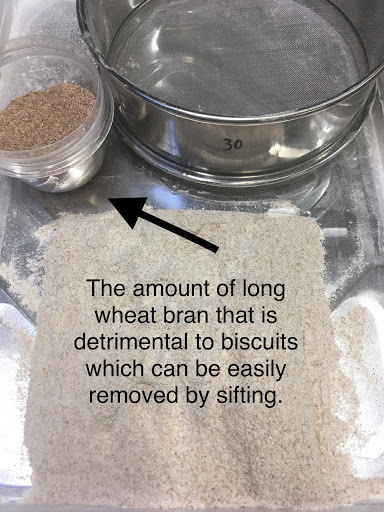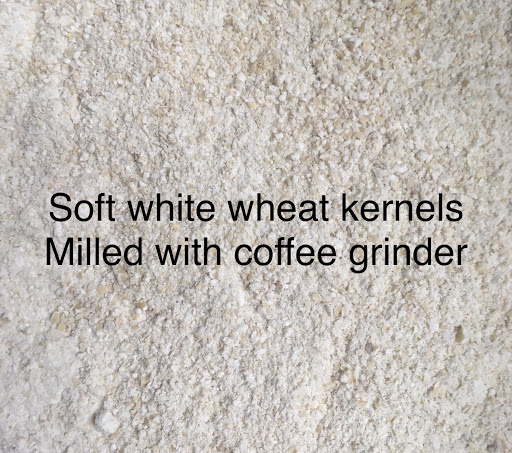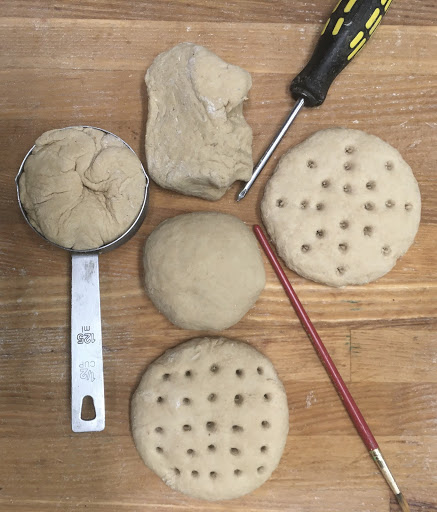Jeff Pavlik, Guest Speaker
Bread History Seminar #18
January 21, 2021
9am Pacific: 6pm Belgium: 9:30pm Bangalore

These are various ways to replicate the basic ship’s biscuit of the eighteenth century using readily available ingredients. The final amount of dough made using these recipes will equal a ration of one pound of biscuits after they are baked and dried. They are listed in order of the easiest to make with the most commonly available flours and tools. Most extant biscuits have a lighter color “white” than varieties of whole wheat “red” flour commonly sold, but this is cosmetic to the baking experience. It is understood that the measurements by volume and by weight will be slightly different, but not everyone has a digital scale, mesh sifting screens, wheat berries or coffee grinders. I do not have a stone flour mill to grind my flour, and period biscuit flour is hard to come by, so here are some ways to overcome those challenges.
Further insight on this bread can be found in my article – https://colonialbaker.net/Reproduction%20Biscuit%20article%20JOTEA%202011.pdf
Recipes

#1 – 3 cups / 454 g red whole wheat flour, wholemeal, 100% extraction
1 cup plus 2 tablespoons of water / 253 g water (56% hydration)*
#2 – 3 cups + ¼ cup / 500 g red whole wheat flour, wholemeal, 100% extraction
Sift through #30 screen (600 micron), removing the long bran ( ⅔ cups, 45 grams)
This makes about 1 lb, 455 g of 91% extraction flour, with the bran removed 1 cup plus 2 tablespoons of water / 253 g water (56% hydration)*
This method can also be used for home grain millers.
#3 – 3 cups / 454 g white whole wheat flour, wholemeal, finely ground, 100% extraction (Recipe in article)
1 cup plus 2 tablespoons of water / 253 g water (56% hydration)*
#4 – 1 cup / 200 g soft white wheat berries. (Method in article text)
Grind using a rolling pin
2 cup / 254 g white whole wheat flour
1 cup plus 2 tablespoons of water / 253 g water (56% hydration)*
*Note some will find these doughs to stiff to work. It is fine to increase the water to 1 cup + ¼ cup, 295 g (65% hydration). The extra water will be baked out and evaporated eventually.

#5 – This is my newer hybrid method of reproducing English Ship’s Biscuits developed since writing my article.
- 225 g soft white wheat berries. Grind 75 g batch in coffee grinder for 30 seconds, grind all three batches
- 115 g white whole wheat flour, wholemeal, finely ground, 100% extraction
- 115 g soft pastry flour (this replicates the feel of the soft stone ground biscuit flour)
- Combine all flour and mix together
- 1 cup plus 2 tablespoons of water / 253 g water (56% hydration)
#6 – 1 lb / 454 g soft white wheat, stone-ground, “biscuit flour” (explained in article and lecture)
1 cup plus 2 tablespoons of water / 253 g water (56% hydration)
Instructions
Step 1. Preheat the oven to 375° F, 190° C. Combine flour with room temperature (68°F / 20° C) water. Make into a stiff dough and let it rest for 10 minutes to allow the flour to soak up the water. If the dough is too stiff for you to mix it by hand, add an additional tablespoon of water. The dough will be denser than bread dough and you should be cautious using modern mixers as they might not do well under the stress of this stiff dough. The initial water added to the flour will seem insufficient to experienced bread makers, but give it time to incorporate and dough will form. * See note in recipes
Step 2. Knead dough until it is smooth. This will take a few minutes. The amount of kneading necessary is less than when developing gluten in yeasted dough, but the time and effort needed for this stiff dough is often the same. After a short while once the water has had time to soak into the flour the dough will become easier to knead. Sometimes it is helpful to divide the dough after a minute of kneading, then knead each individual piece. Adding more water will not harm the dough, it all will be evaporated eventually, if you are still having problems with this stiff dough, wet your hands and try kneading the individual balls between both hands.
Step 3. Divide the dough into five pieces. If you have not added additional water they should be 141 grams each, or each piece will fill a ½ cup measuring cup. Hand roll each piece round like a dinner roll until it is a smooth mass. Press the dough down with the palm of your hand until it is about 4 inches, (100 mm) in diameter and 1⁄2 inch, (13 mm thick).

If the dough cracks on the edges or splits, then more kneading is required.
Make evaporation holes using a pizza docker or an ice pick, the back of a small paint brush or a phillips screwdriver. The holes should be about ¼ inch, (6 mm) apart from each other and cover the entire surface of the biscuit.
They do not need to go all the way through the biscuit dough. Some period references have them stamped on both sides, but this is not necessary or seemingly common.

Step 4. Place biscuits on a cookie tray and bake for one hour at 375 degrees. Once or twice during the baking, open the oven door to allow the evaporating water to escape. When the hour is up, turn off the oven, open the door slightly and leave them for another hour. Remove the biscuits from the oven and place them on a cookie rack to cool. Continue to dehydrate them by leaving them uncovered.

Once they have dried several days, the biscuits will be ready to use. You can check to see if they are done by weighing the batch, it should return close to 1 pound or 454 g. They will keep indefinitely if maintained in a dry, cool place, and stored so that insects cannot access them.